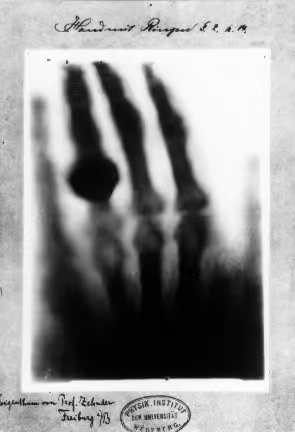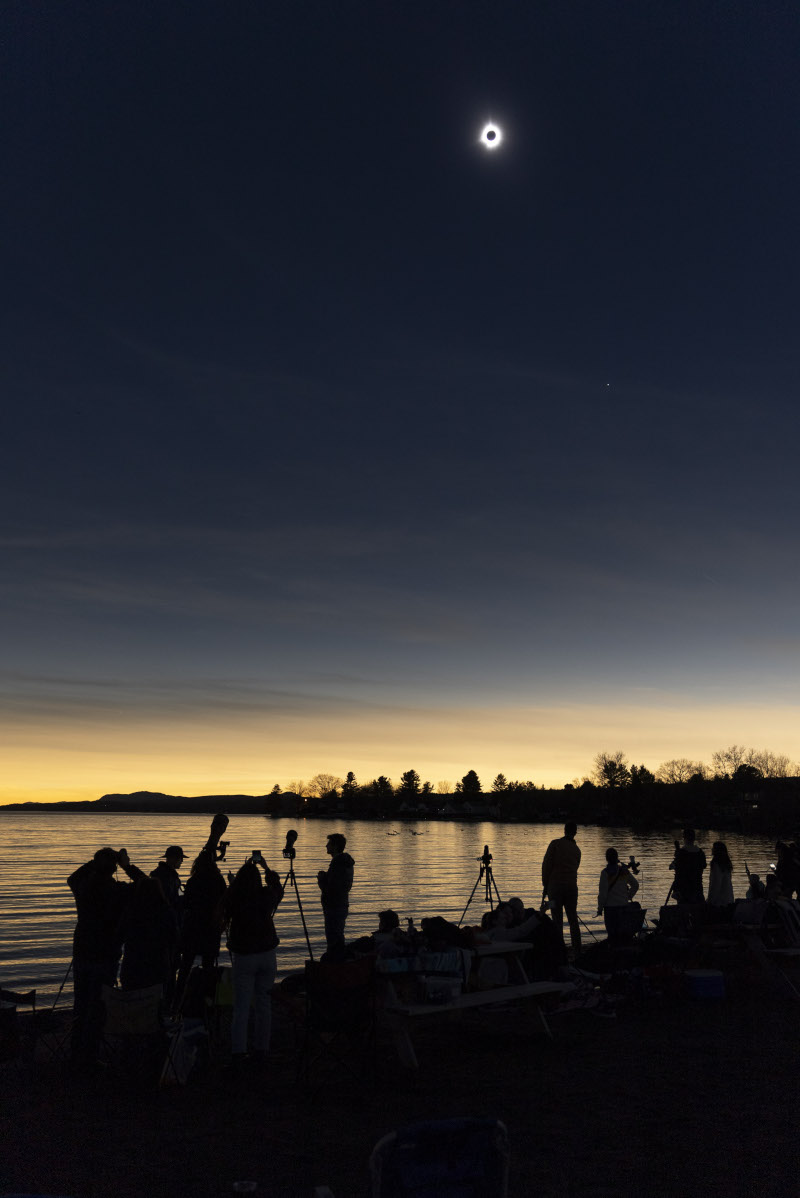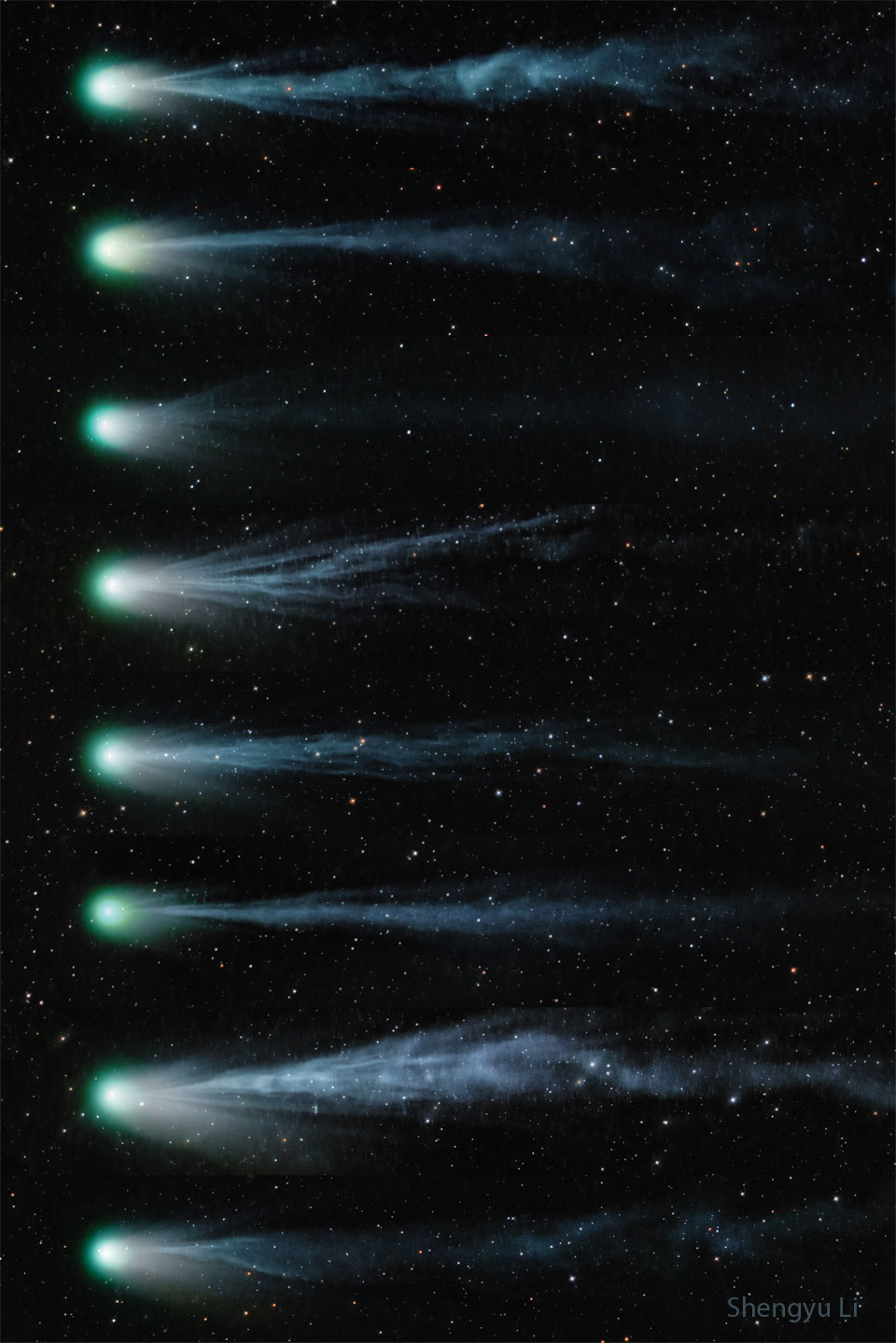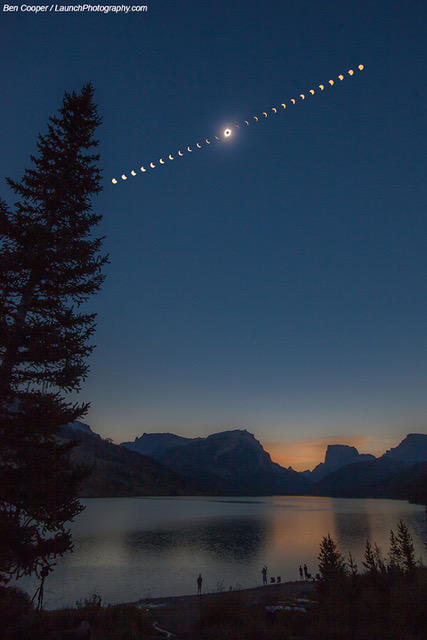
Nombre total de pages vues
09/04/2024
SANTé/MEDECINE - HISTOIRE - 1896 : invention du tensiomètre par Rocci

SANTé/MEDECINE - Le fonctionnement de l'oeil humain - Le fond de l'oeil

ASTRONOMY - Moon's Shadow over Lake Magog
2024 April 9
Image Credit & Copyright: Stan Honda
Explanation: Captured in this snapshot, the shadow of the Moon came to Lake Magog, Quebec, North America, planet Earth on April 8. For the lakeside eclipse chasers, the much anticipated total solar eclipse was a spectacle to behold in briefly dark, but clear skies. Of course Lake Magog was one of the last places to be visited by the Moon's shadow. The narrow path of totality for the 2024 total solar eclipse swept from Mexico's Pacific Coast north and eastward through the US and Canada. But a partial eclipse was visible across the entire North American continent.
08/04/2024
SANTé/MEDECINE - Le fonctionnement de l'oeil humain - La pupille
ASTRONOMY - The Changing Ion Tail of Comet Pons-Brooks
2024 April 8
Image Credit & Copyright: Shengyu Li & Shaining
Explanation: How does a comet tail change? It depends on the comet. The ion tail of Comet 12P/Pons–Brooks has been changing markedly, as detailed in the featured image sequenced over nine days from March 6 to 14 (top to bottom). On some days, the comet's ion tail was relatively long and complex, but not every day. Reasons for tail changes include the rate of ejection of material from the comet's nucleus, the strength and complexity of the passing solar wind, and the rotation rate of the comet. Over the course of a week, apparent changes even include a change of perspective from the Earth. In general, a comet's ion tail will point away from the Sun, as gas expelled is pushed out by the Sun's wind. Today, Pons-Brooks may become a rare comet suddenly visible in the middle of the day for those able to see the Sun totally eclipsed by the Moon.
07/04/2024
SANTé/MEDECINE - Le fonctionnement de l'oeil humain - Le système lacrymal

SANTé/MEDECINE - Histoire - 1895 : découverte des rayons X par Röntgen

ASTRONOMY - A Total Solar Eclipse over Wyoming
2024 April 7
Image Credit & Copyright: Ben Cooper
Explanation: Will the sky be clear enough to see the eclipse? This question is already on the minds of many North Americans hoping to see tomorrow's solar eclipse. This question was also on the mind of many people attempting to see the total solar eclipse that crossed North America in August 2017. Then, the path of total darkness shot across the mainland of the USA from coast to coast, from Oregon to South Carolina -- but, like tomorrow's event, a partial eclipse occurred above most of North America. Unfortunately, in 2017, many locations saw predominantly clouds. One location that did not was a bank of the Green River Lakes, Wyoming. Intermittent clouds were far enough away to allow the center image of the featured composite sequence to be taken, an image that shows the corona of the Sun extending out past the central dark Moon that blocks our familiar Sun. The surrounding images show the partial phases of the solar eclipse both before and after totality.
06/04/2024
SANTé/MEDECINE - Le fonctionnement de l'oeil humain - La synthèse additive

SANTé/MEDECINE - HISTOIRE - 1885 : découverte du vaccin contre la rage par Louis Pasteur

SANTé/MEDECINE - Une nouvelle arme contre le cancer - (7/8) - Un traitement sans résistance ni toxicité
Un autre grand avantage de cette technologie est qu’elle ne repose sur aucun médicament. Les cellules cancéreuses ne peuvent donc pas dévelo...

-
2022 September 26 All the Water on Planet Earth Illustration Credit: Jack Cook, Adam Nieman, Woods Hole Oceanographic Institution ; Data ...
-
La majorité des grêlons qui tombent sous les orages et les averses ne pèsent que quelques grammes. Mais il y a quelques années, c'est un...




